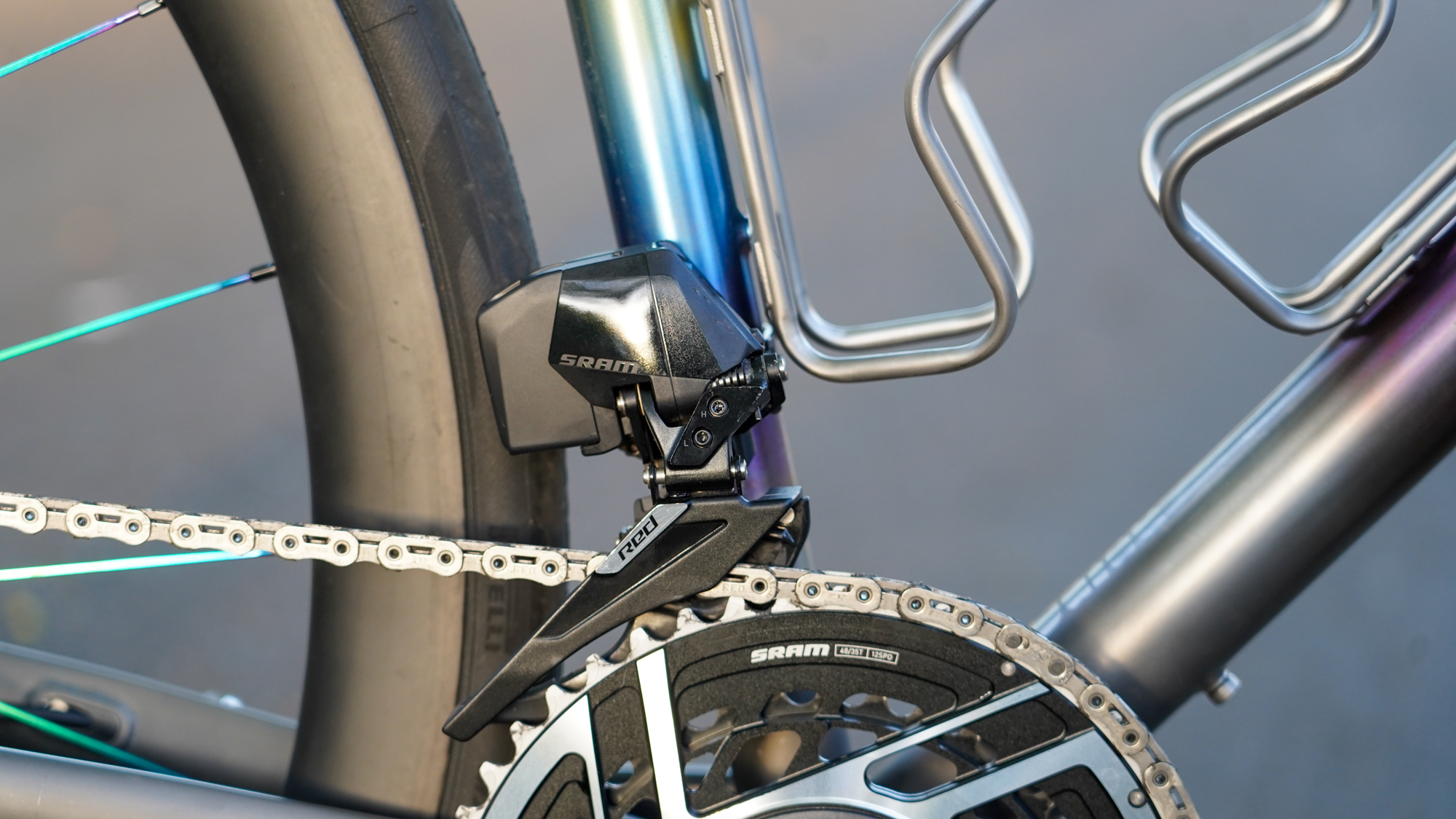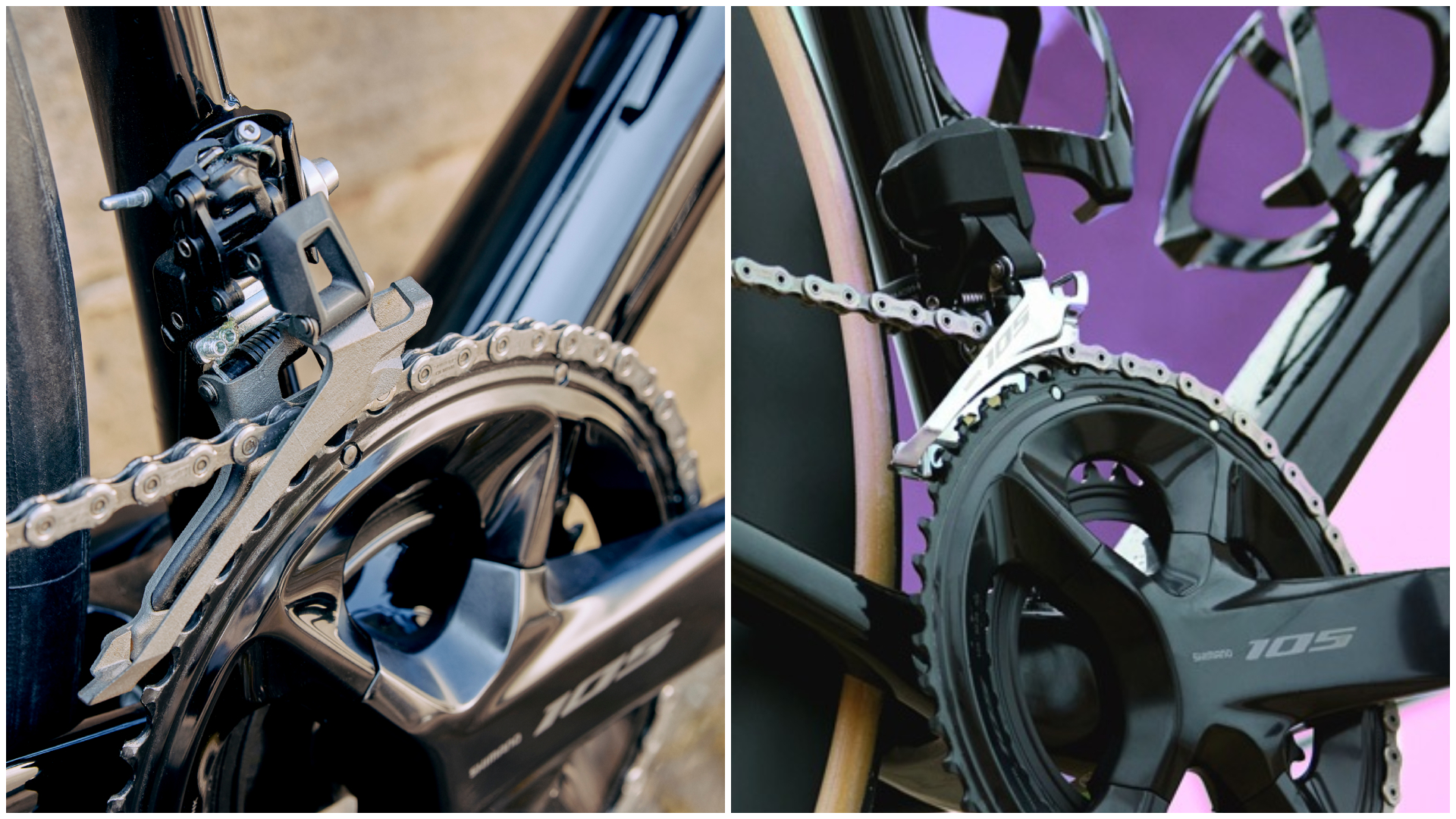Opinion: Are electronic groupsets worth the investment?
Thoughts on drivetrains, buttons, batteries, fast vs slow, good vs evil, wristwatches and zen states of being


Allow me to indulge in a parable, of sorts. Originally, the sun was our means of telling time, then, apparatuses using water and sand were devised for the same purpose. This progressed to spring-driven mechanical clocks, and from there, it was only a matter of time before these became small enough to be worn on our bodies. Early versions of mechanical watches can be traced back to the 16th century. This storied legacy was violently upended, however, by the rapid development of quartz watches in the 1970s.
Quartz watches, which use batteries, can be made cheaper, faster, and more accurately than their mechanical counterparts. Their widespread adoption almost completely wiped out mechanical watchmakers; within a decade, the tradition-steeped industry withered to almost nothing. Only through careful stewardship did mechanical watchmaking survive, and decades’ worth of knowledge was lost in the process.
Fifty years on, quartz and mechanical watches exist in harmony, though they are largely stratified into different markets. Quartz remains affordable and ubiquitous, while mechanical watches are more expensive and less common. Mechanical watchmaking is once again celebrated: unique specimens can command millions of dollars at auction.
Bicycles are not watches, but there are similarities. Both hold a technical allure and can be appreciated from perspectives of function and form. And while the situation isn’t precisely the same, the bicycle industry could perhaps learn a few lessons from the world of watches.
In cycling, electronic shifting has overwhelmingly become the default option, at least for racers and their ilk, and mechanical shifting has fallen out of favour. But are there long-term implications? This electronic takeover has coincided with the cost of bicycles reaching unprecedented heights, in part due to the price of button-controlled groupsets. Should a racing bicycle cost more than a motorcycle or a car? And are the benefits truly there, or are we in thrall to the delight of novelty?

Left: a mechanical front derailleur. Front: an electronic front derailleur.
Shimano’s first iteration of its electronic shifting, titled Di2, came out in 2009, heralding significant changes to how bikes are designed and built. The discourse at the time centred around updating software instead of upgrading parts and drivetrains that would perform without human inputs. These things didn’t come to pass, but the technology caught on with the launch of Shimano’s second generation of Di2, which was easier to use and more affordable. Since then, electronic shifting has proliferated, with SRAM leading the move to truly wireless shifting and innovating with varied 1X options, and even Campagnolo getting on board with batteries.
Today, electronic groupsets are on every professional road racer’s bicycle, and this has been the case for a decade. Electronic drivetrains have proven themselves robust and reliable, or at least as robust and reliable as anything else. The benefits are many: crisp shifting without deterioration, programmable shifting options, remote shifting possibilities, auto trim features, easier cable routing and installation, and more.
The latest race content, interviews, features, reviews and expert buying guides, direct to your inbox!
The question, then, is whether or not these things make a material difference to the average rider, or if the benefits are worth the steep price tag. Before high-end cable-actuated drivetrains were abandoned by major manufacturers (of the big three, only Campagnolo still offers premium mechanical groupsets), they were very impressive.
I would argue that most of these benefits are not necessary for the majority of riders. They largely fall into the “nice to have” category. For a casual rider getting on their bike once or twice a week in good weather, it might take years for shift quality to deteriorate due to cable wear. Does it really make sense to spend hundreds or thousands more to avoid this? The one scenario in which I think electronic shifting is clearly superior is for those with mobility limitations or arthritis. In this instance, the easier shift action of pressing a button is clearly worth the cost.
It is interesting to see how quickly groupsets have been split into separate tiers: generally speaking, electronic ones are geared toward the high end, and mechanical ones are entry-level. This isn’t absolute: Shimano has a relatively new 12-speed GRX mechanical option, Campagnolo has several very expensive mechanical offerings, and SRAM Apex AXS brings wireless to a more accessible price point.
Despite their relegation, mechanical groupsets have many worthwhile attributes. Without the need for electronics, they are cheaper to make, can be lighter, do not require charging, can be more easily field-repaired, and have significantly less expensive replacement parts. For the average rider, the simplicity of mechanical groupsets makes a lot of sense.
Broadly speaking, cycling is an inaccessible sport. The high cost of bicycles, accessories and races is preventing people from participating, and the cost of electronic groupsets has exacerbated this inaccessibility. This is detrimental to the sport.
I do not wish to denigrate electronic groupsets - I think they’re excellent and own multiple bikes with electronic shifting - but my fervent hope is that mechanical groupsets do not fall by the wayside. Part of the allure of a bicycle is its simplicity. It is an extraordinarily efficient machine. Modern bicycles are impressive, but increasingly they require specialized tools and esoteric knowledge that is beyond most people’s capabilities. I hope this doesn’t persist. Reasonable cost and user serviceability are two of the things that make bicycles so versatile and durable, but I am concerned by the direction the industry is moving towards proprietary parts and designs without backwards compatibility factored in. Longer term, will there be pushback to that trend, at least beyond the retrogrouch sector?
Jumping back to the analogy at the top: it is now clear that the mistake was in assuming that quartz watches would wholly replace mechanical ones, and history has demonstrated to us that this was not the case. I hope bike component manufacturers can avoid following a similar path.
We should absolutely keep pushing the limits of aerodynamics and faster, better drivetrains, but we should not forgo the elegance of simplicity.

Tyler Boucher is a former (and occasionally still) bike racer across several disciplines. These days, he spends most of his time in the saddle piloting his children around in a cargo bike. His writing has appeared in magazines published in Europe, the UK and North America. He lives in Seattle, Washington.